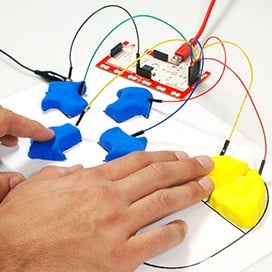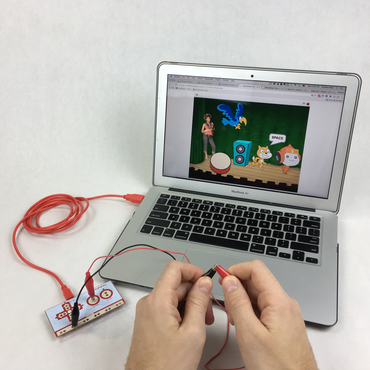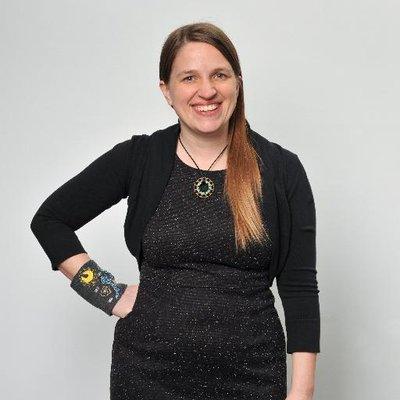If your students are new to electronics and maker education, the Makey Makey board is a fun and extremely accessible tool for all ages. Its plug-and-play capability makes it a great gateway to physical computing.
Invented by two MIT students with a passion for hacking keyboards and playing musical fruit, Makey Makey is often seen as the ultimate banana piano. However, this little board can do so much more than that!

Because of the open-ended nature of using the world as your construction kit, with a little planning you can get your students way beyond the banana. In fact, it’s one of the only tools (other than a pencil) that any teacher, of any grade level, teaching any subject, can pick up and have success in their first attempts at learning. Plus, it’s a highly engaging tool for students of any age.
It’s a super approachable board, so even students who have never used an electronics kit may feel instantly familiar with Makey Makey because of the Nintendo-like controller layout on the front.
As an avid Makey Makey-ier, I’ve been working on finding the best ways to introduce the power and possibilities of Makey Makey to my students. Throughout my journey, I’ve also found that this simple invention kit is a great tool that can lay the groundwork for physical computing and springboard students into other electronics adventures and computational tinkering with things like Arduino, e-textiles, 3D design and processing.

By far the most popular and widely used Makey Makey lesson in schools is designing a game in Scratch and creating handmade controllers with Makey Makey. (In 2015, Diana Rendina and I dubbed this the #makeymakeychallenge.) Yet you can go so much further with this digital duct tape. Here are some of my favorite ways to get a little more STEM from your banana.
My Top 5 Favorite Lesson Ideas for Makey Makey:
- 1. Explore simple and parallel circuits with Makey Makey output and these super sweet challenge cards!
- 2. Hack that old-school Hot Wheels Physics lesson with Makey Makey and program a timer in Scratch.
- 3. This classifying and sorting lesson is great for hands-on learning.
- 4. Your secondary Language Arts students can hack and analyze poetry with graphite drawings (or adapt this idea for elementary-aged students by drawing and making fables interactive with Makey Makey.)
- 5. Or you can even teach poetry writing like a science lab with this Interactive #BlackOutPoetry lesson inspired by David Saunders.
You can find even more self-guided ideas for your students in Makey Makey Labz or sign up to become a Makey Makey Certified Educator by taking an Invention Literacy Workshop (get details here). Plus, next month Aaron Graves and I are releasing our newest book: 20 Makey Makey Projects for the Evil Genius. We wrote this book with the intent of taking Makey Makey to a whole new level. You’ll learn to mash up Makey Makey with 3D printing, paper circuits, Scratch programming, processing and even gesture-controlled programming.
I love to hear how others incorporate Makey Makey with their daily curriculum. Comment below with your favorite lessons and ideas for Makey Makey-ing with students!
Colleen Graves is a high school librarian and blogger, obsessed with Learning Commons transformations, makerspaces, Makey Makey, technology education, making stuff and getting girls involved in STEM. She offers the unique perspective of starting/creating two different makerspaces and Girl STEM groups in established public schools. Colleen writes and presents about creating makerspaces in the book Challenge-Based Learning in the School Library Makerspace. Plus, she collaborated with her husband to create two makerspace project books for makers on any level: The Big Book of Makerspace Projects and 20 Makey Makey Projects for the Evil Genius. (Photo Credit: Michael Madsen)



Maker Education, getting started, Makey Makey, Guest Post